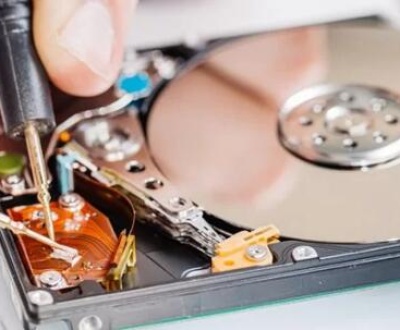Losing files from an external hard drive can be alarming, but there are various strategies you can employ to recover them or prevent future loss.
1. Understanding the Issue
Before diving into recovery methods, it’s essential to understand why files may disappear:
Accidental Deletion: Files may be deleted unintentionally.
Corrupted File System: Issues with the drive’s file system can make files inaccessible.
Virus or Malware: Malicious software can hide or delete files.
File System Errors: Inconsistent data can result in files becoming invisible.
Connection Issues: A faulty USB port or cable can disrupt file visibility.

2. Initial Troubleshooting Steps
When you first notice files missing from your external hard drive, follow these steps:
Reconnect the Drive: Unplug and replug the drive into a different USB port.
Test on Another Computer: Connect the drive to another device to check if files are visible there.
Check the Trash or Recycle Bin: If files were deleted, they might still be recoverable from the Trash (macOS) or Recycle Bin (Windows).
3. Recovering Disappeared Files on Windows
3.1 Method 1: Show Hidden Files
Files may be hidden rather than deleted. To check:
Open File Explorer.
Click on the View tab.
Check the box for Hidden items to reveal hidden files.
3.2 Method 2: Using the Search Function
In File Explorer, use the search bar in the upper right corner.
Type the file name or extension (e.g., .docx, .jpg) to locate the file if it’s misplaced.
3.3 Method 3: Check for Corrupted Files
Running a check disk can help identify and fix errors:
Open Command Prompt as an administrator.
Type chkdsk X: /f (replace X with your drive letter).
Press Enter and follow the prompts.
3.4 Method 4: Data Recovery Software
If the files remain missing, consider using data recovery software:
Recuva: A user-friendly tool for recovering lost files.
EaseUS Data Recovery Wizard: Offers a straightforward interface and powerful recovery features.
Disk Drill: A versatile recovery tool that supports various file formats.
Download and install the software.
Launch the program and select your external hard drive.
Follow the prompts to scan for recoverable files.
4. Recovering Disappeared Files on macOS
4.1 Method 1: Show Hidden Files
To view hidden files on macOS:
Open Finder.
Press Command + Shift + . (dot) to toggle the visibility of hidden files.
4.2 Method 2: Use Spotlight Search
Press Command + Space to open Spotlight.
Enter the file name or type of file to search.
4.3 Method 3: Check Disk Utility
If the file system is corrupted, you may need to repair the disk:
Open Disk Utility (Applications > Utilities).
Select your external drive and click First Aid.
Follow the prompts to check and repair the disk.
4.4 Method 4: Use Data Recovery Software
Data recovery software can also assist macOS users:
PhotoRec: A powerful open-source recovery tool.
Stellar Data Recovery: A comprehensive solution for various file types.
Download and install the recovery software.
Launch the application and select your external hard drive.
Follow the on-screen instructions to recover lost files.
5. Prevention Strategies
After recovering your files, consider implementing strategies to prevent future data loss:
5.1 Regular Backups
External Backup: Use another external hard drive for backups.
Cloud Storage: Services like Google Drive, Dropbox, or OneDrive can provide off-site backups.
5.2 Use Reliable Antivirus Software
Regularly scan your external drive for malware and viruses to prevent file corruption.
5.3 Safely Eject Your Drive
Always use the “Safely Remove Hardware” option to prevent corruption when disconnecting your drive.
5.4 Monitor Drive Health
Use tools like CrystalDiskInfo to check the health of your external drive periodically.
6. Advanced Recovery Techniques
If initial recovery attempts fail, consider more advanced techniques:
6.1 Professional Data Recovery Services
If critical files are lost and recovery software fails, consider contacting a professional data recovery service. They have specialized tools and expertise to recover data from severely damaged drives.
Cost: Professional recovery can be expensive, often ranging from $100 to $1.000 depending on the complexity.
Data Security: Ensure the service provider has a solid reputation and security measures in place.
6.2 Using Command Line Tools (Windows)
For advanced users, the command line can provide deeper access:
Open Command Prompt as an administrator.
Use the attrib command to unhide files:
Type attrib -h -r -s /s /d X:\*.* (replace X with your drive letter).
This command removes hidden, read-only, and system attributes from files.
6.3 File Recovery from Windows Backup
If you have Windows Backup enabled:
Go to Settings > Update & Security > Backup.
Click on Go to Backup and Restore (Windows 7).
Follow the prompts to restore files from backup.
7. When to Seek Help
If your files remain missing after extensive troubleshooting:
Professional Help: Contact a data recovery specialist.
User Forums: Seek assistance from online communities like Reddit or tech forums, where users may share similar experiences and solutions.
8. Further Reading and Resources
For more detailed insights into file recovery and data management, explore the following resources:
Microsoft Support: Guides on troubleshooting external drives and file recovery.
Apple Support: Information on using Disk Utility and Finder effectively.
Data Recovery Blogs: Websites like Stellar or EaseUS provide tutorials and recovery tips.
About us and this blog
Panda Assistant is built on the latest data recovery algorithms, ensuring that no file is too damaged, too lost, or too corrupted to be recovered.
Request a free quote
We believe that data recovery shouldn’t be a daunting task. That’s why we’ve designed Panda Assistant to be as easy to use as it is powerful. With a few clicks, you can initiate a scan, preview recoverable files, and restore your data all within a matter of minutes.
Subscribe to our newsletter!
More from our blog
See all postsRecent Posts
- Data recovery salt lake city utah 2025-04-18
- Data recovery sacramento 2025-04-18
- Data recovery miami 2025-04-18

 Try lt Free
Try lt Free Recovery success rate of up to
Recovery success rate of up to









